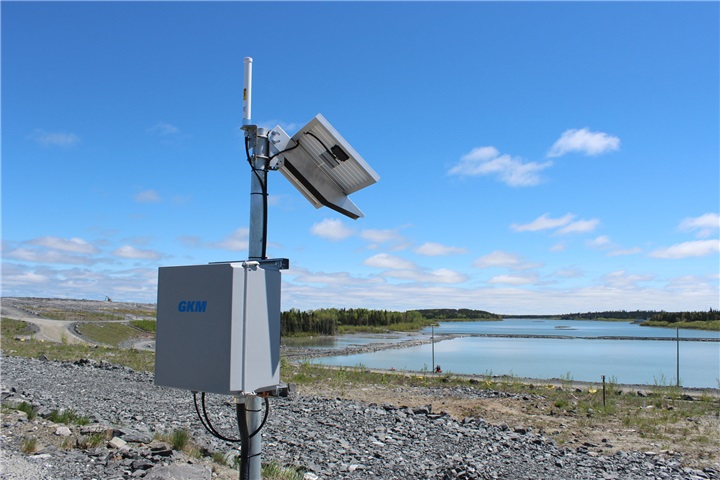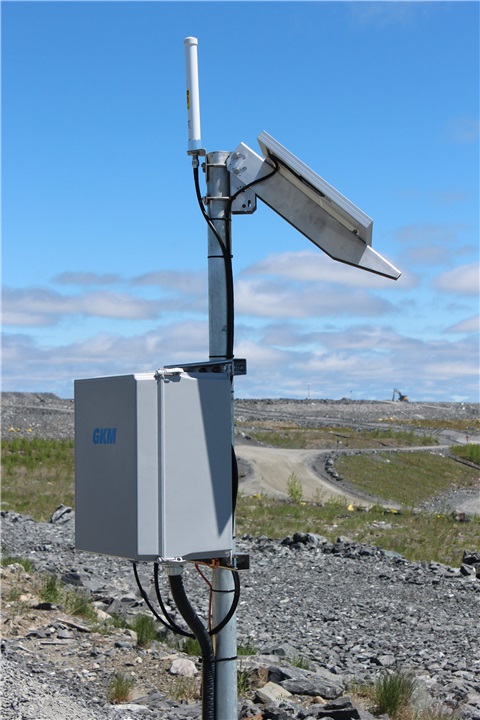Data Acquisition Systems - DL Series
Data Acquisition and Logging
Data logging systems (DL Series) are commonly used as a way to enhance the value and usefulness of geotechnical instruments. DL Series systems are used in a wide array of project types, including dams, mines, infrastructure work and research. Custom-built from parts from leading manufacturers, they are tailored to each application and can accommodate almost any type of instrument. They are rugged, reliable and will bring added value to any project.
Why use data Logging systems ?
DL Series are designed to acquire and store data from all types of instruments. They alleviate the need for manual measurements and the associated personnel costs. Rather than having an employee make the rounds to each instrument, the entire process is automated. This also removes the risk of error associated with manually writing down measurements. DL Series offer smart acquisition: acquisition rates can be changed according to events, since the DL Series are able to trigger other systems such as pump stations or seismographs, and manage the power available to instruments and external devices. Finally, they can include telecommunications options such as cellular or satellite modems to extract data in real-time from the instruments, removing the need for regular site visits.
How do they work ?
A typical DL Series is built from a Campbell Scientific data logger, multiplexers, instrument interfaces, a battery and a solar panel. Each instrument is polled at specific intervals and the data is stored in the on-board memory. Each logger has a built-in battery that ensures continuous operation in the event of a blackout.
Example applications
Arctic mine tailings
Tailings dams in an arctic mine require a large number of instruments over a wide area. The instruments are typically spread out over several square kilometers and are too difficult to reach depending on the season. Careful planning and deployment of the DL Series therefore increases the reliability and ease of use of these instruments.
Construction
Major infrastructure work in cities often takes place near critical or sensitive buildings that require extensive monitoring to maintain their integrity. Crackmeters, tiltmeters, extensometers and in-place inclinometers are frequently used. By properly optimizing instrument types and routing, costs can be kept down and a high reliability can be guaranteed. Local personnel and engineers can immediately be warned of any anomaly and take the required action.
Hydroelectric dams
Hydroelectric dams necessitate the installation and reading of instruments whose reliability has to be guaranteed over the very long term. GKM Consultants build their DL Series to the highest and most stringent standards to ensure this long-term reliability.
Structural health monitoring
GKM Consultants’ DL Series offer real-time measurements of instruments installed on large structures such as bridges and highways. The DL Series pushes this centralized real-time data to GKM’s servers. Users can then easily access their data on our servers for visualization and analysis.
Specifications
Compatible instruments
- All vibrating-wire instruments
- Thermistors
- Measurand SAA
- Weather instruments
- RS-485 and RS-232 controlled instruments
- Analog instruments
- 4-20 mA
- 0-5 V DC
- Bridge strain gages
- Resistive thermometers
- Thermocouples
- TDR
- Dust monitors
- Sound level monitors
Power
Typical <1 W. Highly dependent on acquisition frequency,
communications and instrument choice.
Temperature range
-60 °C to +50 °C
Acquisition period
>50 ms







